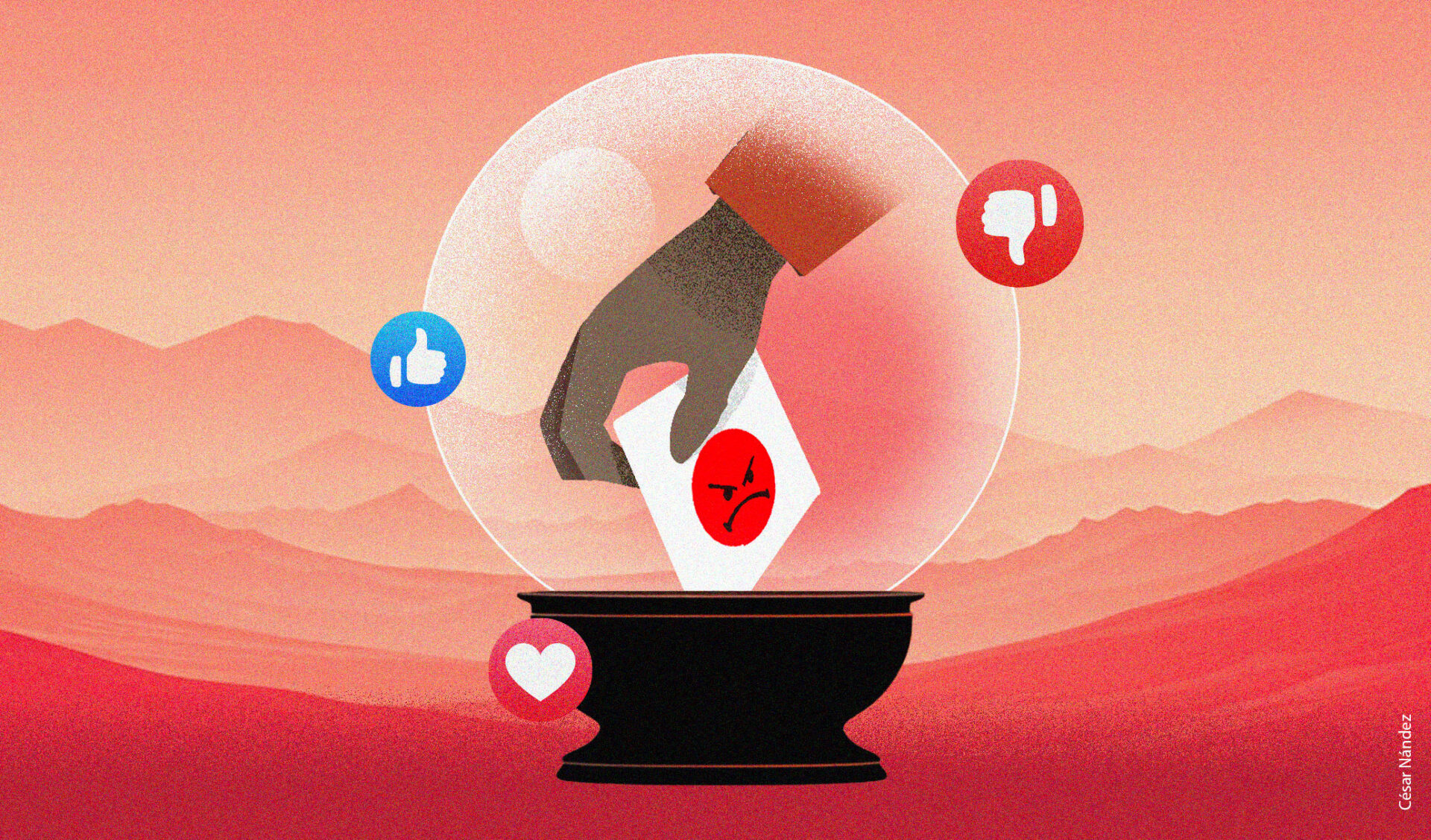Would it be possible to predict voter behavior weeks before an election by analyzing their digital activity? In the fast-paced world of social media, where every post, every tweet, every Instagram story, and every TikTok video makes up a vast sea of data, the answer seems to be positive.
A recent study that analyzed more than 500 million public comments on social networks over two years suggests that conclusion. This immense data collection was processed using advanced Natural Language Processing (NLP) algorithms, a technology that allows machines to analyze human language. The research explored the relationship between the psychographic profile of social network users and their attitudes toward various aspects such as the economy, health, education, and, of course, election candidates and their voting intentions.
The texts written by network users during the campaign reflect their feelings and impressions, among which six main emotions are identified: joy, sadness, surprise, fear, anger, and disgust. This classification is complemented with an analysis of feelings categorized as positive, negative, and neutral to determine their political projection. The discussion is also organized from a summary of the large data sets into predominant themes in the online conversations, offering a clear view of what concerned and occupied users.
It thus emerges, for example, that Javier Milei, the winning candidate, generated strong empathy in more than 80% of social network users, mainly through emotions such as hatred and anger toward the political and economic situation of the country. In contrast, Sergio Massa, the losing candidate, transmitted mainly fear toward the future, which generated a lower level of empathy. This approach reveals the ability to predict electoral trends through social listening and NLP, as well as the strength with which emotions can shape public opinion.
Based on these trends and emotional alignments, the study concluded that Javier Milei had a significant probability of becoming president of Argentina, with a certainty of 89% according to the analysis models. This conclusion tells us about both the power of big data and artificial intelligence as well as the emergence of new tools for surveying the political future beyond the traditional public opinion poll. The study also sheds light on the importance of the non-rational and purely affective or intuitive side of elections, as well as psychological identification with candidates. The outsider Milei generated an almost “religious” attraction among young men, while older people preferred the stability and predictability offered by Massa, a traditional politician.
While polls can capture preferences and opinions, analysis of social network data offers a window into the underlying emotions and passions that drive those opinions. However, these advances do not come without their own challenges and ethical dilemmas. The idea that political opinions and voting inclinations can be accurately predicted by algorithms raises questions about privacy and the use of personal data. Interpretation of data collected from social networks must be done with care, considering not only the context and meaning behind the words but also the potential biases inherent in algorithms and data samples. Indeed, new technology is used by political parties and candidates to fine-tune their campaign strategies, target undecided voters, and better understand the concerns and desires of their constituents, but it could also be used to manipulate or unduly influence public opinion, raising ethical dilemmas that must be addressed.
This technological advance, which allows us to look beyond the numbers and superficial responses of polls, brings us face-to-face with the multidimensional reality of public opinion. It is now possible to decipher not only what people say, but also how they feel and why they might feel that way. This emotional understanding that underlies decisions exceeds simple demographics or political affiliations. The use of these digital tools also gives us a unique opportunity to observe how political opinions develop and change in real-time.
In the past, changes in public opinion often only became evident with objective changes in electoral results or an even longer term through structural variations that revealed shifts in social class or the emergence of new cleavages such as religious, ethnic, or regional ones. Now, on the other hand, we can see how a speech, an event, or even a scandal can influence public perception almost instantaneously and generate drastic alterations in voting preferences.
All of this opens up interesting questions about the future of political campaigns. How will candidates and parties balance data collection and analysis with the need to maintain a genuine and authentic approach in their interactions with voters? How will this impact the way policies are formulated and citizens’ concerns are addressed?
As we move into this new era, it is essential to remember that behind every tweet, comment, and post is a person with their own experiences, beliefs, and emotions. The ability to predict electoral behavior weeks in advance is not just a matter of analyzing data. It is a matter of understanding people. And in that understanding lies the true power of these tools, a power that, if used wisely, can significantly improve our understanding of democracy and citizen participation in the digital age.,
Text presented at the SAIMO-CEIM Congress in the panel on public opinion studies co-organized by WAPOR Latin America.
*Translated by Janaína Ruviaro da Silva from the original in Spanish.













